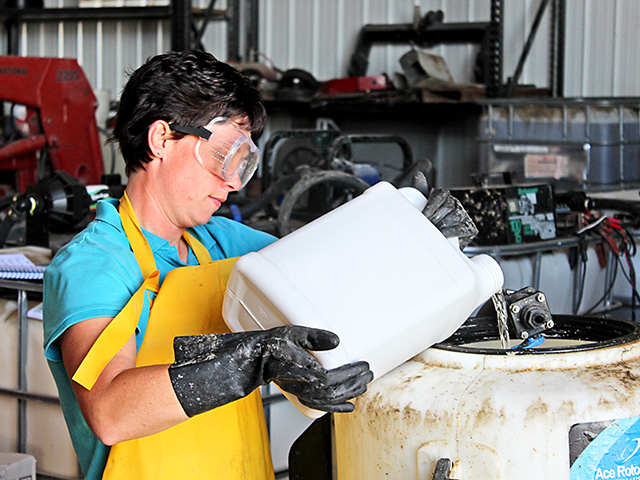This yearlong endeavor looks at how four farmers are evaluating technology and agronomic information that can boost the productivity of their operations.

This past spring threw a couple of cover-crop challenges to Carmen Hawk and family. It was a reminder that after four years of growing cover crops, they haven’t seen everything.
Due to the early spring in central Indiana, their cover crop of cereal rye and radishes took off early, shading the soil and slowing soil dry-down. Then, the cover crop took longer to die off. Ultimately, planting was delayed. "This year, we didn’t start planting corn until the day we were finished up last year," Hawk says.
Another challenge was a field tile that wouldn’t drain. When the tilers dug up the 4-foot-deep tile, they saw it was plugged with roots from the cereal rye cover crop. "It was only the second time our tilers had seen that," Hawk explains.
To unplug the tile lines, which were plastic, the installers dug down to the line in several places and then blew out the roots with compressed air. "The plugged section ran for some 200 feet," Hawk says. As for the future, she adds: "We will continue using cover crops, but we’ll definitely change our seed mixture to something without cereal rye in it."
Hawk is part of a 1,600-acre family operation near Shelbyville, Indiana. The family includes her father, Mark Nigh, and her brother, Ryan Nigh.
Through the years, Hawk and family have seeded cover crops mostly on soybean stubble after fall harvest. They tried seeding covers aerially into standing corn in the fall of 2014 but weren’t happy with the coverage or stands in the target field. "Let’s just say we got a great stand in my mom’s flower beds," Hawk says.
Despite the challenges to working with cover crops, Hawk and family value the benefits they provide.
"Cover-crop root penetration reduces compaction, along with providing good wind and erosion control, and nutrient holding," Mark Nigh says. Hawk adds that in a dry spring, cover crops shade the soil and help conserve moisture. "But in a wet spring, it’s detrimental, especially with strip-tilling," she notes.
That’s because the family’s strip-till operation is heavy, literally. It includes their tractor, a 16-knife strip-till unit on a heavy bar, and a dry fertilizer applicator carrying 8.5 tons of phosphorus and potassium, all followed by a double tank of anhydrous. Notes Hawk: "With it being wet, we tracked up some fields—something you don’t want."
The family has strip-tilled for 18 years. "The No. 1 reason we like it is we don’t have to drive through standing corn to sidedress with anhydrous or UAN," Hawk explains. "It also lets us space out applications. Some guys around here are sidedressing while also trying to plant and spray at the same time."
Hawk and family shoot for 100-bushel-per-acre winter wheat yields. Last crop year, they boosted average wheat yields from 75 to 90 bushels per acre, mainly by split-applying nitrogen and spraying an early spring application of Priaxor fungicide. They also applied a late-spring application of Caramba fungicide to control head scab.
They adjusted that plan this crop year, adding both fall and spring applications of Priaxor at the recommendation of Nicole Mercer, BASF Innovation Specialist. Wheat fields were split, so side-by-side comparisons could be made.
Controlling disease is critical to top wheat yields. "Anyone pushing for high winter wheat yields in Indiana has to apply at least one, and probably two, spring fungicide applications," Mercer says, noting that head scab alone can cause yield losses of up to 50%.
To assess fungicide efficacy, Mercer conducts root digs with Hawk each year—all part of the family’s continuing push for top wheat yields.